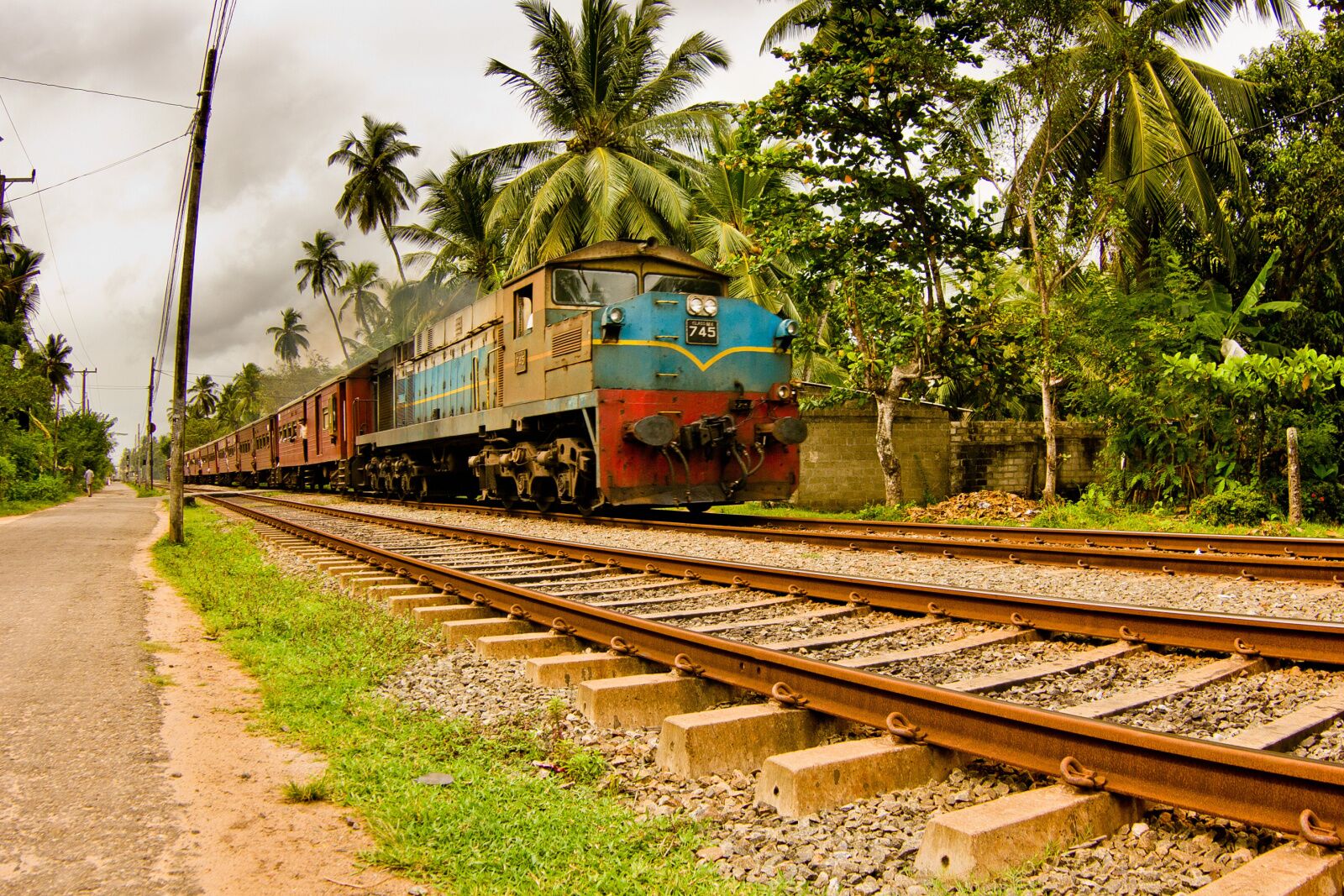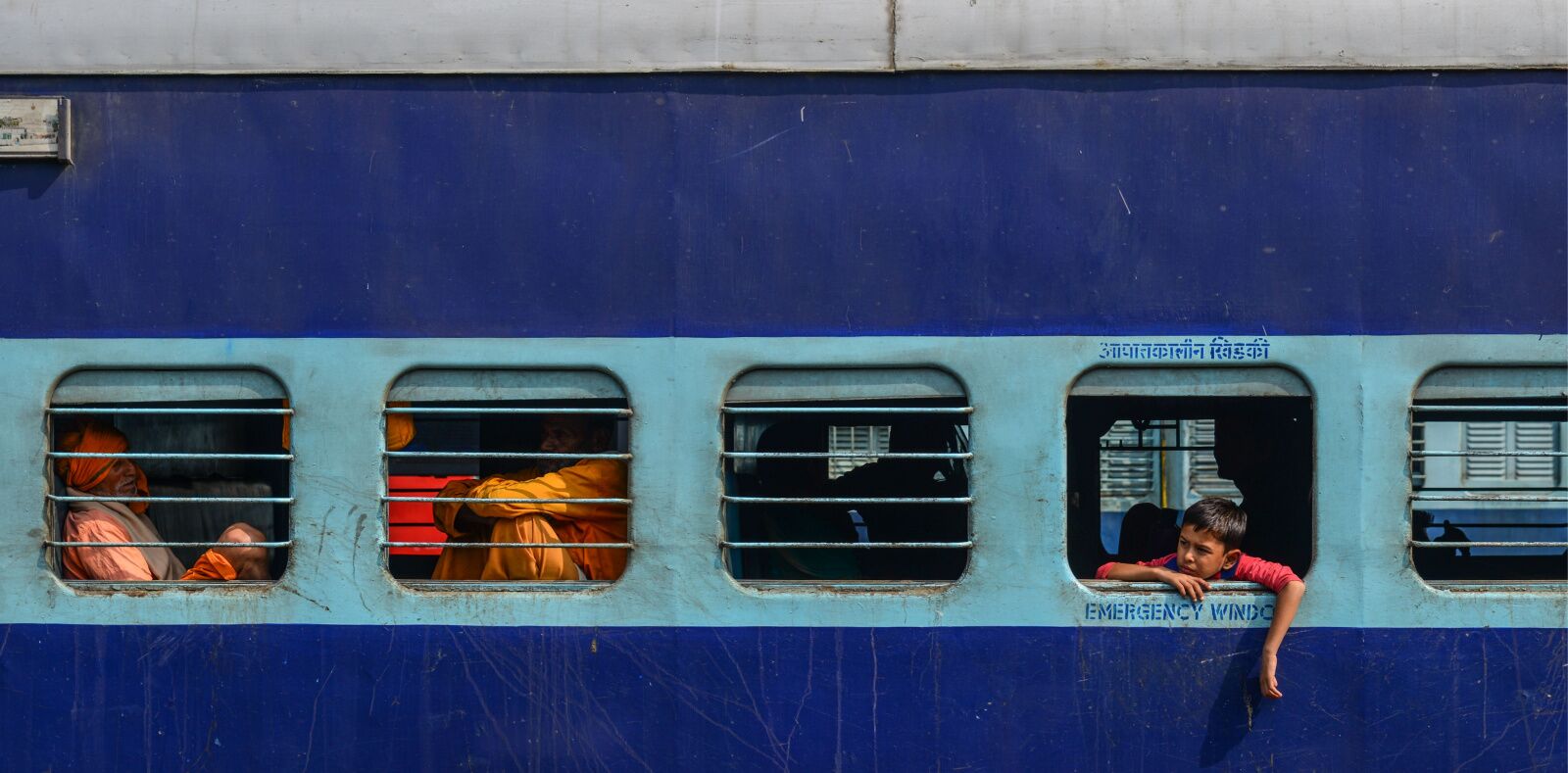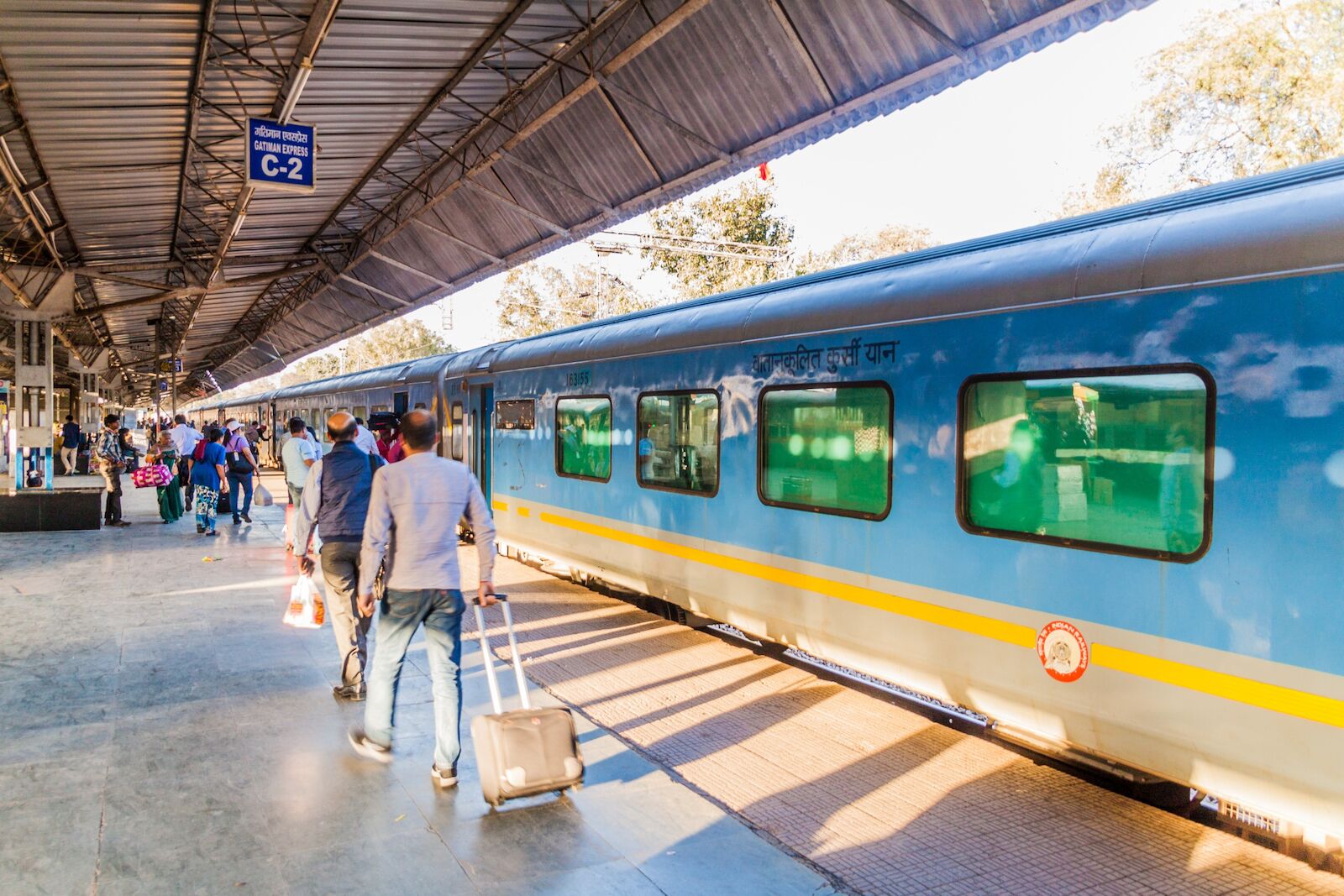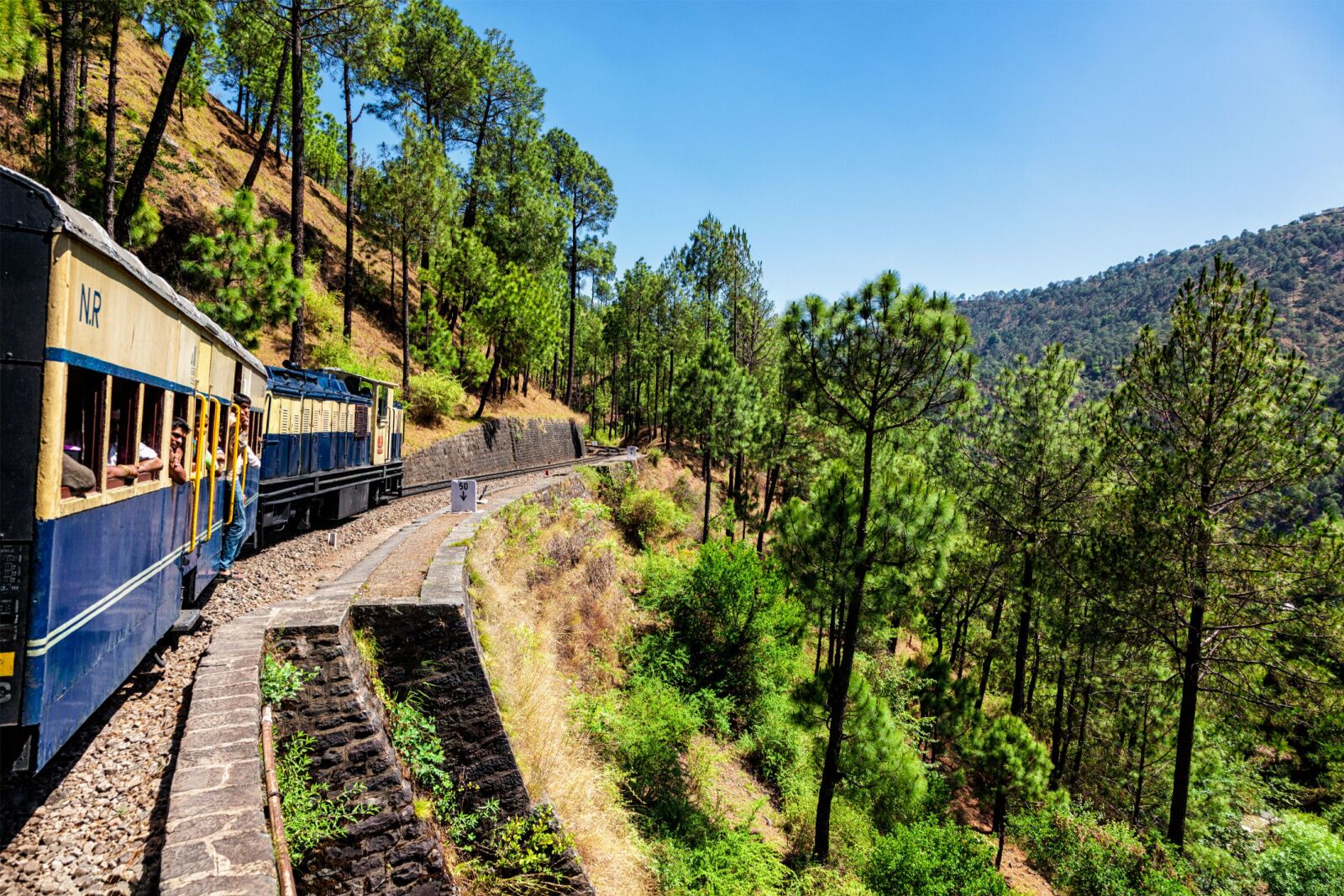One of the most exciting things you can do in India is to take the train – which is saying a lot, considering the large country offers everything from Bengal tiger safaris to trekking in the Himalayas to jungle-covered tropical islands. Rail lines crisscross the nation, carry millions of travelers every day. They’re an intrinsic part of the cultural flavor of India.


A Guide to Indian Railways: How to Easily Explore the Country by Train
To ride an Indian Railways train is to allow yourself to be swept up in the hurly-burly of everyday life and join the masses in movement. It’s hard to describe the smell of fried snacks on the railway platform, the call of the chai seller moving down the aisle, and the hubbub of excitement as the train begins to roll out of the station without experiencing it for yourself. Indian Railways is essentially a microcosm of life in India, affording the opportunity to see the countryside glide by while you meet and interact with locals.
Indian Railways really is the lifeblood of India. The system is the fourth-largest in the world by route length, and the first by passenger count: approximately 22 million people take the train in India every day, which amounts to eight billion rides per year. Indian Railways is also one of the world’s largest employers. All trains in India are run and operated by the company, save for a few private, high-end tourists trains
The dizzying array of train types, classes, status codes, and routes can make navigating the Indian Railways system seem overwhelming. But with some basic knowledge and a little advanced planning, it’s easy enough to ride the rails with relative ease.
-
- Trail types, classes, and codes
- How to book Indian Railways travel
- Tips for traveling by train in India
- Considerations for female travelers
- Recommended routes
- Luxury trains in India
Train types, classes, and codes

Photo: Yuliia Ozeran/Shutterstock
All trains in India are not created equal. India has many different names for different types of trains, which could indicate any number of things: the geographic route, the level of comfort, the speed, or what city it leaves from. It can be pretty confusing.
So to make it easier, try and narrow your search to these four:
- Vande Bharat Express: Semi-high-speed modern trains that connect major cities in short (under one day) trips
- Rajdhani: High-speed trains with air conditioning that connect Delhi with major Indian cities
- Shatabdi Express: Day trains with AC and comfort-focused amenities that make one-day trips to medium and large cities
- Gatimaan Express: Train that runs from Delhi to Agra and beyond and is sometimes called the Taj Mahal Express.
These are the best passenger trains in India, aside from several expensive luxury trains.
Indian Railways has different classes of service, much like an airline. And you probably don’t want to end up in the most budget seats. Just like there are many train types available, there are also many classes. For comfort on sleeper trains, choose 1AC (first class with air conditioning) or 2AC (second class with air conditioning). On trains with seats, rather than berths, both the executive chair car (EC) and chair car (CC) are comfortable; the EC seats are arranged with two seats on each side of the aisle, while CC seats have three.
To accommodate the millions of people trying to book trains every day, Indian Railways has developed a complex system of status codes. Once you buy your ticket, your status code can change, depending on the type of ticket you bought. You can check your status by inputting your 10-digit PNR number into one of several apps (below).
When booking, look for seats with a code “AVL,” which means available and okay for you to book. Once you book it, your ticket will show that seat as “CNF,” meaning confirmed. Other codes you may see include “RAC,” (reservation against cancellation), which means you can get on the train but will only be assigned a seat/berth if someone cancels; and “WL,” or waitlist. That means you won’t be able to board the train unless your ticket status gets switched to RAC or CNF – which only happens when people cancel.
It is risky to book these tickets and not recommended if you’re new to train travel in India.
How to book with Indian Railways

Photo: Phuong D. Nguyen/Shutterstock
Booking a train in India is not easy. Registering with Indian Railways is difficult for foreigners, as is paying with a foreign card. You can try the 12Go.asia site (a third-party ticket booking site, similar to Expedia) or contact a travel booking company in India. Otherwise, the best way to do it is wait until you arrive in India, then visit the International Tourist Bureau on the first floor of the New Delhi Railway Station. From here, you can book all trains, including those that have a foreign quota (reserved seats just for non-Indians; you’ll need your passport to book).
Tips for train travel in India

Photo: Matyas Rehak/Shutterstock
Getting organized in advance to take the train in India will save you a lot of hassles. Fortunately, there are many downloadable apps, such as IRCTC Connect (Google Play/Apple) and NTES (Google Play/Apple), both of which are official apps. Trainman and ConfirmTkt are also good options. All allow you to track your train and check your seat status, among other features.
Knowing when your train is going to arrive is crucial, as Indian Railways trains can sometimes be hours late. It’s also very helpful to find out exactly where on the platform your coach will be after the train pulls into the station so that you know where to stand.
There are usually quite a few options for eating on the train, but it helps to carry a bag of snacks, if you want something specific (or something fresh, like fruit). You can also use apps like RailYatr or RailRestro to order food to be delivered to your train. The quality is usually better than the food served onboard.
If you are taking an overnight train, it’s a good idea to bring a cable lock and lock your luggage to the frame of the berth. You can slide your luggage under the bottom bunk, as long as it’s not too big – which is a good reason to travel light in India. Carry-on bags and backpacks will usually fit, but larger pieces of checked luggage likely won’t.
Since your bag will be locked under the bottom berth, you’ll probably want items like water, socks, an e-reader, and a sleeping bag liner (if you’re particular about hygiene) in a small bag you can keep at your seat with you. Only the standard sleeping class trains do not include bedding; all other sleeper trains have the basics like sheets and a pillow.
Indian Railways safety for women

Photo: Val Shevchenko/Shutterstock
Many solo female travelers take the train in India every day, and the vast majority have a good experience with no problems. You’ll find many Indian families traveling by train, most of whom are usually friendly and curious towards foreigners. Most families are also protective of safety on the train and will generally come to your aid if something untoward should happen.
If you’re nervous about riding Indian Railways or not used to traveling alone, it’s probably a good idea to take a train during the daytime only, and ensure you arrive at your destination before nightfall. You can arrange to have a driver meet you: they can literally wait for you on the platform in front of your car.
If you do decide to take an overnight train, 2AC (second class) is probably the best bet. There are four bunks in the cabin, with a curtain between the cabin and the aisle. There are two bunks in the aisle, which also has a curtain. By contrast, in 1AC (first class), there are four bunks and a door that locks. In general, it’s safer to be behind a curtain, rather than a locked door, as the curtains will allow you to call for help more easily on the rare occasion you need it.
Recommended routes

Photo: Dmitry Rukhlenko/Shutterstock
If you’re planning a trip to India and want to include a train journey or two, look for Indian Railways routes that connect major cities.
- The Delhi Jaisalmer Express: This 18-hour sleeper train takes you from Delhi to Jaisalmer, a desert city famous for the “Jaisalmer Fort.” The views along the route are mostly of bright red and orange desert scenes – truly beautiful.
- The glass roofed trains: These are train cars with glass roofs designed to show off the scenery along certain routes. They’re attached to various trains throughout the country and can be booked online like any other seat (though they’re a bit pricier). They’re officially called “Vistadome” trains
- Rajdhani Express from Delhi to Mumbai: Connecting two of the most popular cities for tourists in India, the Rajdhani Express sleeper leaves late afternoon from Delhi and arrives in Mumbai around 8:30 AM. Bonus: meals are included in the ticket price.
- Kalka-Shimla Toy Train: This roughly six-hour train ride is in northern India and is one of the prettiest routes in the country. It crosses more than 800 bridges and several different cars are available, from the tourist-focused Shivalik Palace Tourist Coach to the more budget-friendly chair cars or twin heritage coach.
Luxury trains are the last word

Photo: CRS Photo /Shutterstock
If you want to splash out, India is home to some of the world’s most luxurious trains. There are several much more luxurious trains available. That includes the Palace on Wheels, owned by Indian Railways and serving India’s “Golden Triangle.” Other luxurious trains include the Deccan Odyssey (running week-long sightseeing trips through Maharashtra), the Golden Chariot, and the most luxurious train of all: the Maharajas’ Express.
Of course, luxury trains are a much more expensive option, usually costing several thousand for a multi-day tour instead of the $10-$15 you’ll pay for a reserved birth on Indian Railways – and they come with the downside of being sealed in a luxury bubble, missing the lively hustle and bustle of the train platform.